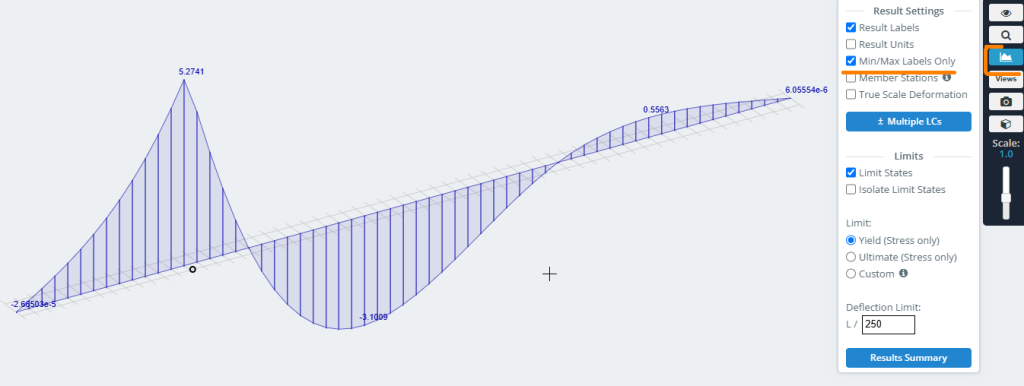What are Traffic Lines for?
If you want to get influence lines for any calculated values in sections and nodes of the model, you must first define the movement paths for a unit load in the preprocessor. The Traffic Lines tool allows you to do this.
使い方
The button to open the Traffic Lines parameter window can be found on the left-side interface panel in the Moving Loads section.
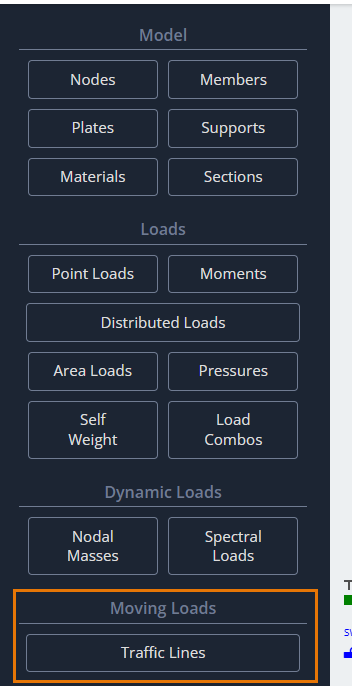
After clicking this button, the Traffic Lines dialog box will appear in the modeling area to define its parameters.
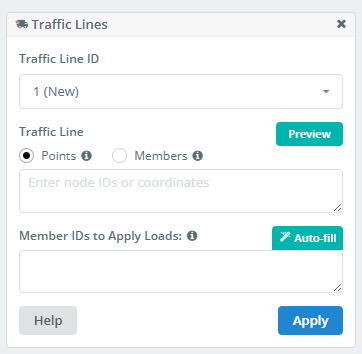
Traffic Line ID
A list of all Traffic Lines defined in the model. 選択できます, 編集, or delete one if it’s no longer needed.
A Traffic Line is a line in space. This line does not have to be straight. There are two methods for defining such a line. The first method uses existing points in the model or direct coordinate input for the line’s vertices.
Defining Traffic Lines using Points
ポイント
If the traffic line is a straight line, it is sufficient to define two points: the start and the end.
- To define by points, specify the node IDs in this format:
1;4 - When defining points by coordinates, they must be entered in this format:
0,2.3,0; 210,2.3,0
Member IDs to Apply Loads
To obtain the values of the factors being studied, a series of static analyses must be performed. The program needs to know where to place the unit force in each static loading. これをする, you must define a set of members.
The unit force will be applied and load cases will be created at the intersection/superposition points of these members with the traffic line. This process occurs automatically when the analysis is run.
The more intersections you have, the more accurate the influence line you will get. しかしながら, too many intersections will lead to long calculation times. Choose a reasonable number.
- The list of members is entered in the format:
1, 2, 3, 4 - 使用する “Auto-fill”. The list will be defined automatically and can then be edited manually.
Defining Traffic Lines using Members
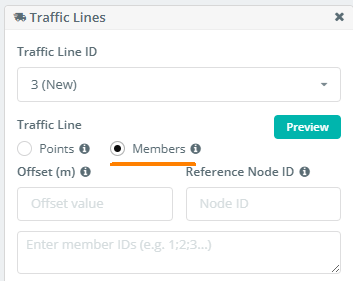
あるいは, you can define the traffic line path using a chain of members. This approach is particularly useful when the intended path is curved and follows the curvature of a structural member (like a bridge girder, 等).
これをする, enter the members for the path into the list in the format: 1;2;7;4;5;12… または 1-25 if the members in the chain are sequential.
オフセット
This field defines the offset distance from the specified chain of members. したがって, it’s useful if the traffic line needs to follow the shape of the member chain but not its exact position.
Reference Node ID
ここに, you will specify the ID of the node that defines the direction of the offset for the traffic line from the specified member chain.
最後に, after defining all parameters, 繰り返し間の距離 適用する to add the traffic line to the list.
影響線
After running the analysis on the model with defined traffic lines, you can analyze the results as influence lines. これをする, you must find the 影響線 button on the left-side interface panel in the post-processor.
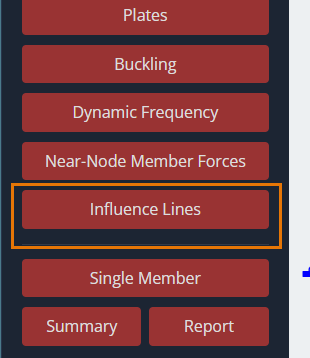
After clicking this button, の Influence Line dialog box will appear in the modeling area to define its parameters.
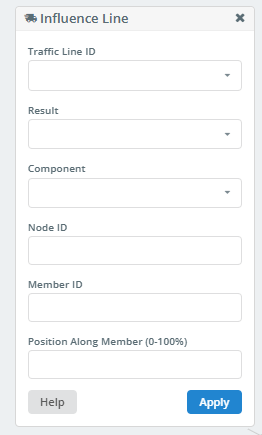
Traffic Line ID
In this dropdown list, you can select the ID of the traffic line for which the influence line will be built. You can also build influence lines for all traffic lines by selecting “すべて”.
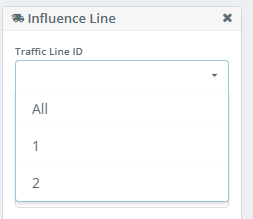
結果
This list allows you to select the result type for building the influence line.
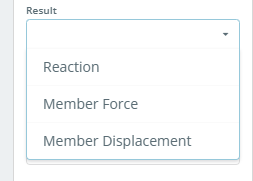
成分
This list shows the resulting values for reactions at supported nodes, or forces and displacements in member sections. The contents of this list depend on the selection in the “結果” リスト.
もし “結果” に設定されています Reaction, the list will look like this:
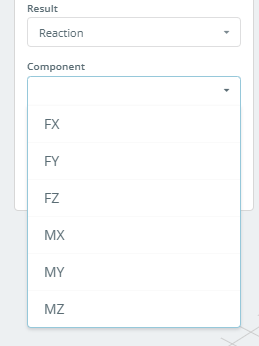
もし “結果” に設定されています Member Force, the list will look like this:
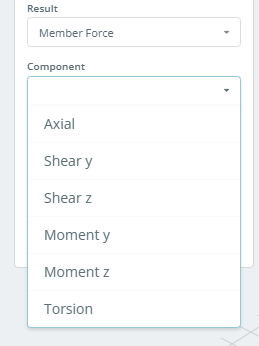
もし “結果” に設定されています Member Displacement, the list will look like this:
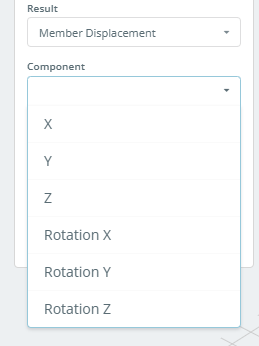
メンバーがいます
もし “結果” に設定されています Reaction, you must specify the ID of the supported node for which the influence line will be built.
メンバーID
もし “結果” に設定されています Member Force または Member Displacement, you must specify the member ID for which the influence line will be built.
メンバーに沿った位置 (0-100%)
This field specifies the position of the section on the member for which the influence line will be built. The section’s coordinate is set as a percentage of the total member length, measured from the start of the member.
をクリックした後、 適用する ボタン, the influence line is graphically plotted on the model.
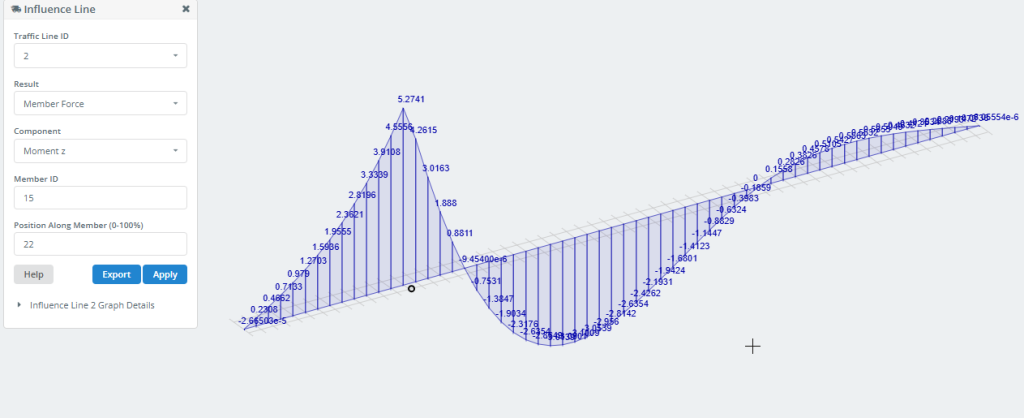
の 書き出す button allows you to save the Influence Line data to your computer as an Excel file.
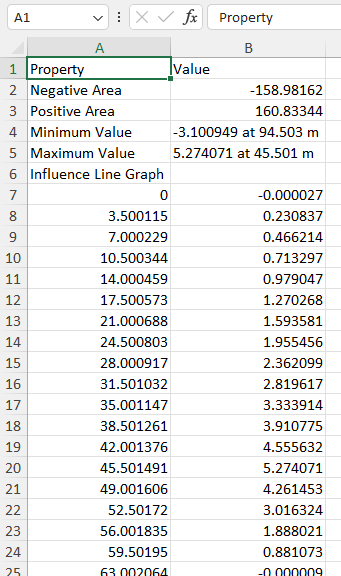
You can also get this information by clicking on Graph Details.
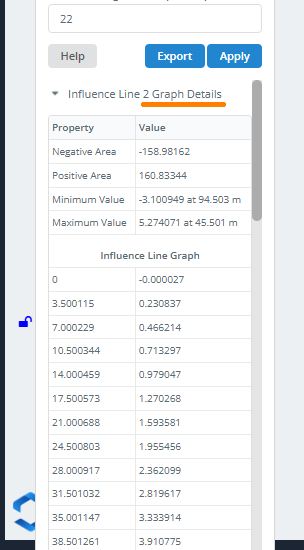
To display only the Min/Max values on the graph, use the following settings in the right-side menu:
